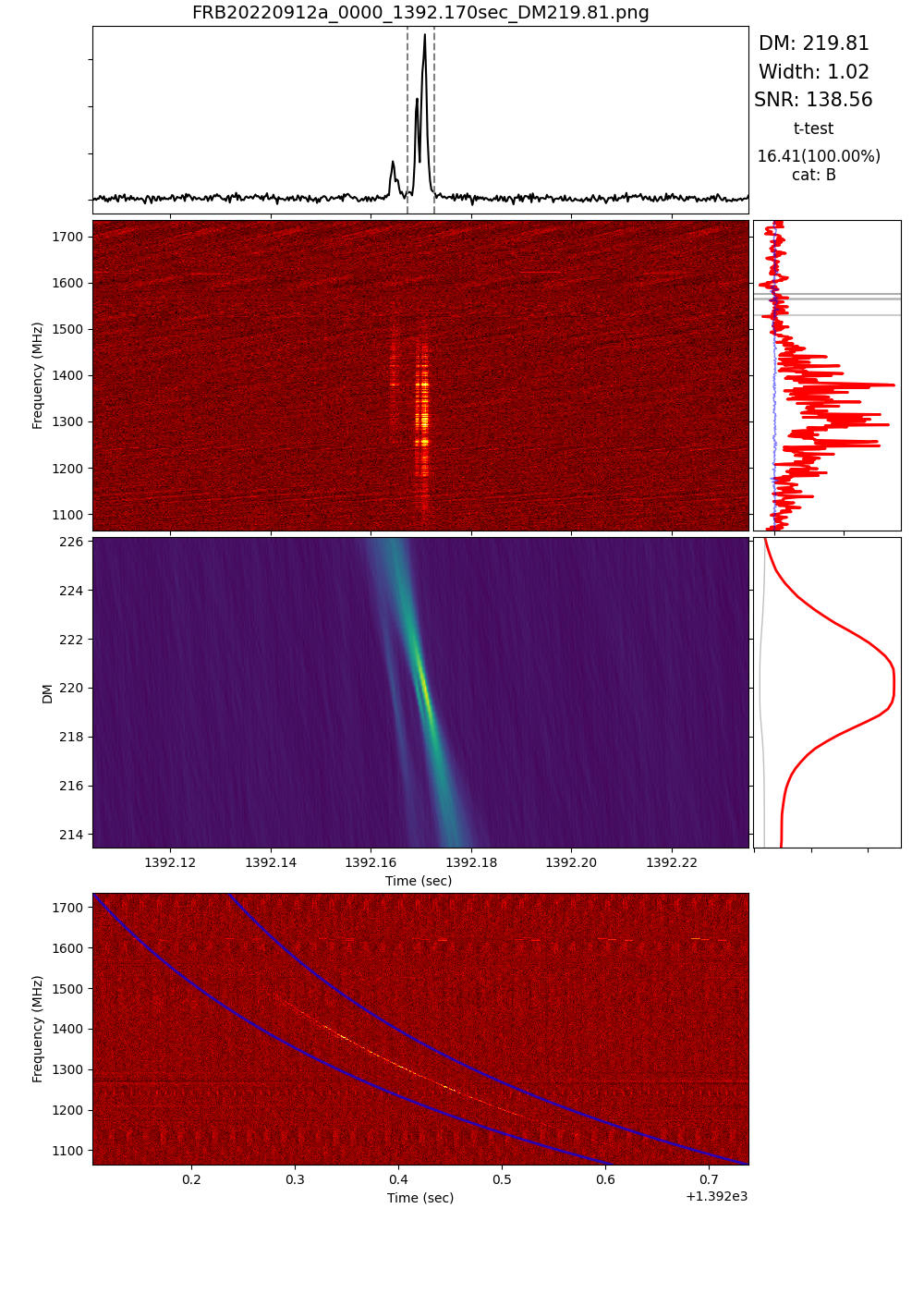
The SETI Institute's Allen Telescope Array (ATA) has joined the quest to understand Fast Radio Bursts (FRBs), detecting eight bursts from the repeater FRB20220912a over the last few weeks. FRBs are bright flashes of radio light in the sky that last for only milliseconds. The higher frequencies from FRBs arrive before the lower frequencies, like a descending slide whistle, a characteristic known as a high dispersion measure (DM). These high DMs indicate that FRBs originate in other galaxies, but much is still unknown about their astrophysical origins. Fittingly, as humans on Earth celebrated Diwali, FRB20220912a put on a celebratory light show in the sky!
"It is absolutely great to witness the ATA effectively responding to real triggers of different astrophysical events and playing an important role in cutting-edge radio astronomy science," said Wael Farah, research scientist at the SETI Institute.
The figure below shows one of the ATA's recent FRB detections - the topmost plot shows a complex, multi-peaked profile, indicating interesting emission physics at work. The bottom-most plot shows the "slide-whistle" behavior, showing that the burst came from extragalactic distances.

And FRBs aren't the only explosions in space that the ATA has been observing. The refurbishment program of the Allen Telescope Array has turned the instrument into a facility capable of swiftly responding to calls for observations of various astronomical transient events. The ability to execute this kind of observing was proven last month when the ATA recorded data on and detected the afterglow of a bright supernova at an unprecedented timescale as reported in The Astronomer’s Telegram here.
"We knew from other telescope reports that FRB20220912a was in an active state, but it took us a few nights to finally catch a burst with the ATA,” said Sofia Sheikh, NSF MPS-ASCEND Postdoctoral Fellow at the SETI Institute. “That made it even more exciting.”
These results are published in The Astronomer’s Telegram here.





